Fishing measurement models
Extractive fishing exploits stocks of certain species. These stocks are limited and overexploitation can lead to the disappearance of the population. To conserve the same long-term resource and adjust the fishing effort as adequately as possible to this conservation it is necessary to know in advance the removable amount. The forecast takes into account the current situation of stocks and the survival rate of eggs to be launched in the coming years.
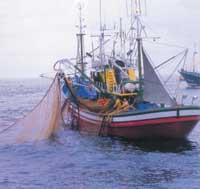
The status of stocks is evaluated through direct scientific campaigns and through sampling in ports and fishing vessels in the working groups of ICES 1, ICCAT 2 or other entities involved in the management of fishing resources. In addition, the population recruitment rate must be foreseen. Therefore, we must analyze how many larvae are born from the eggs laid and how many of them die. In this way you will be able to know in more detail the number of recruits that will pass to the exploitable stock.
To predict the variability of population dynamics it is customary to use mathematical models. These models are sets of equations to obtain “virtual” information about the behavior of a fish population. To a certain extent, they are a representation of reality that tries to reflect the variability of the factors that affect the dynamics of this population. As they are known and incorporated into the model, this model approaches reality, so forecasts are more likely to be more reliable.
Fish larvae monitoring models have an extraordinary interest in developing the exploitation forecasts, as they can be an instrument of anticipation of recruitment. In the models developed to date for the monitoring of fish larvae, only the variability of the physical environment has been taken into account.
The HAMSOM transport model (HAMburg Shelf Ocean Model) developed in the SEFOS 3 project, for example, takes into account the advection (or horizontal transport) and dispersion of larvae by water leaks to predict the survival of fish larvae, vertical migration under light, the stage of life (age or measure) and the water column layer.
However, it is clear that in addition to the variability of physical-chemical variables, interactions between living beings also intervene. Factors that influence the survival of fish larvae are, in addition to the temperature or directions of water currents, availability and forage hobbies, competition, predators, the situation of parents, the quality of eggs... In this sense, changes in abundance at all stages of fish life during the recruitment process can affect the fishing stock.
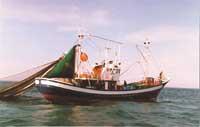
Mortality agents, year after year, can act in various ways and times. In addition, as the vulnerability and behavior of a larval stage is statistically modified, mortality factors also change.
In general, the stability of the water column, hunger, advection by cultivation zones and the influence of predators are considered as the main agent of mortality of eggs and larvae. In the case of verdel, there is little information about internal mortality (quality and viability of eggs, genetic fitness...) and yet it seems that they are factors to consider. In fact, in the case of cod and other species it is known that these internal factors are of vital importance.
SEAMAR Project
Several European research bodies in the management of fisheries resources have launched the SEAMAR 4 project. It is a set of research areas whose objective is the interannual survival of the early age verdel and, therefore, to predict the strength of recruitment for the exploitable stock. The innovation model to be developed in the SEAMAR project is to incorporate biological interactions into this model.
Based on verdel biology, that is, the influence of the physical and biological environment on growth and mortality rates, it is intended to construct a model of prediction of pre-recruitment survival. This model is expected to obtain as direct a simulation of the destination of eggs, larvae and postlarvae from the laying areas to the nursery areas and therefore accurately predict the recruitment rate.
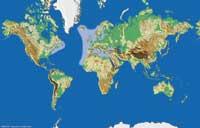
The SEAMAR project is part of the physical model HAMSOM already built. This model is added information on the populations of the planktonic stages of the verdel and the early nectonic stages. More specifically, behavioral parameters are added to modify abundance, growth, mortality and vertical distribution and horizontal dispersion depending on environmental conditions. While there is plenty of historical information about verdel eggs, SEAMA sampling campaigns aim to further refine this information.
Growth, patch distribution and grass availability
The growth and abundance of eggs and larvae, the temporal and spatial distribution of the population, the availability of food, preferences and variability of the diet will be data of great importance when modeling mortality and survival.
Growth and mortality in larva and postlarva stages have an inverse relationship. That is, fast-growing larvae will be weaker than slow-growing larvae. Despite the importance of temperature between factors affecting growth, biological factors should not be neglected, such as the size of eggs and their state and the forage richness of the laying area. The tendency to
grouping plankton in the marine environment is evident on any scale. In fact, phytoplankton patches are strongly correlated with certain physical characteristics that condition nutrient availability. On the other hand, regarding the distribution of patches between mesozooplankton and fish larvae, they are not only physical factors but also socio-biological behaviors of relevance. It has been observed that the success of food, the culinary behavior of parents, the development of networks or the ability to avoid them are related to the distribution of patches. However, this distribution also has its drawbacks, such as increased competition for food or cannibalism between parents and siblings.
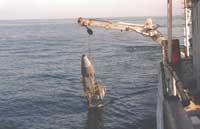
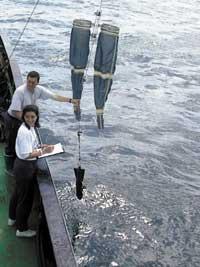
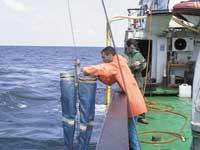
In general, the mortality rate of eggs of pelagic and early stage larvae varies depending on the spatial distribution of groups. Early phase eggs and larvae do not have the skills necessary to avoid predators, so these initial groups are a great opportunity for predators. As larvae disperse, mortality decreases. However, late and young larvae tend to clump together. However, guidelines have already been developed to prevent predators, so mortality by predators is not necessarily increasing.
Thus, for the SEAMAR model, the mortality rate of eggs and verdel larvae is calculated taking into account two data related to expansion. On the one hand, the increase in capture rates that may occur as a result of the concentration of premature larvae in patch structures and, on the other hand, if mortality from late larval capture is equal to that of premature periods.
The survival of larvae is closely related to the availability of pastures. Morphophysiological changes in larva development condition your diet and your diet. To determine the influence of zooplankton characteristics (distribution, composition...) on the survival and recruitment of larvae, it is necessary to analyze the diet of the individual in the development (ontogeny) from the fertilization of the egg to maturity. Among other things, consider what and how much food there is each day. Being a species of rapid growth, high metabolism and therefore with high forage needs, in the case of verdel larvae it is important to know its corner and food strategy.
With everything...
The changes in the known laying behaviors (time, location and models) and the knowledge acquired through the model will allow to predict more accurately the situations in which successful recruits can occur verdel. In this way, as proposed by ICES, operational models of stock management can be implemented.
It is clear that the production capacity of the sea is limited and that the aid of science is essential for sustainable exploitation. In fact, access to new fishing resources is difficult and the situation of some of the coves we currently have is evident.
Therefore, in order to guarantee the future, it is necessary to preserve and properly manage available resources. In this sense, it is the organizations that work in the applied research of Social Utility resources that we have to offer appropriate tools.
In addition, this conservation effort does not only pursue an economic benefit. In our opinion, the species under exploitation and the ecosystems that compose them, as well as the social, cultural and human/environmental interaction around fishing, are values to be conserved in a natural way, especially in the face of a future that leads us towards a homogenizing globalization.
Verdel

Verdel ( Scomber s|us L. 1758) is a kind of pelagic fish from the hiding family. Its distribution area extends to the North Atlantic. It inhabits marine waters and cold and temperate brackish. Despite spending the winter in deep water, towards spring approaches the continental slope forming large banks on the surface of the sea. Adults can reach 55 cm in length, 1 kg in weight and 20 years of survival. They eat zooplankton and their predators are sharks, marine mammals and birds, turnids, gats and merlucids. They are multisegua and the most prosperous set time dates back to spring. The eastern Atlantic areas extend from the Baltic to the Bay of Biscay, always around the continental slope.
Verdel eggs and larvae are also pelagic and are kept in group aggregations in a clear patch distribution. At the beginning, the food is taken from the yolk sac and at the end of it, they pass to the exogenous food. Although they initially eat phytoplankton (probably because they have not developed capture behaviors), they soon start eating copo nauplius and zooplankton eggs. As the larva grows, it also increases the size of its prey.
1 The ICES/CIEM (International Council for the Exploration of the Sea – International Council for Marine Research) is an international research body that aims to research and manage the marine ecosystems of the North Atlantic and its living resources.
2 ICCAT (International Commission for the Conservation of Tunnas – International Commission for the Conservation of Tunnas) is a multi-government fisheries organization responsible for the conservation of tuna in the Atlantic Ocean and adjacent seas.
3 The SEFOS (Shelf Edge Fisheries and Oceanography Study) project aims to investigate the relationship between slope current and species of commercial interest. The entities involved in the development of this project are: SOAFD, PML, SAHFOS (United Kingdom); IEO (Spain); IFREMER, ARMINES (France); IFM, BAH (Germany); RIVO (Netherlands); IMR (Norway); IH, INIP (Basque Country).
4 Entities participating in the SEAMAR project (Shelf Edge Advection, Mortality and Recruitment): PLM (Plymouth Marine Laboratory) (United Kingdom), IEO (Spanish Institute of Oceanography) (Spain); IHF (Institut für Hydrobiologie und Fischereiwissenschaft), AZTI (Marçal Institute of Fisheries and Food Technology (Ireland)
Buletina
Bidali zure helbide elektronikoa eta jaso asteroko buletina zure sarrera-ontzian











